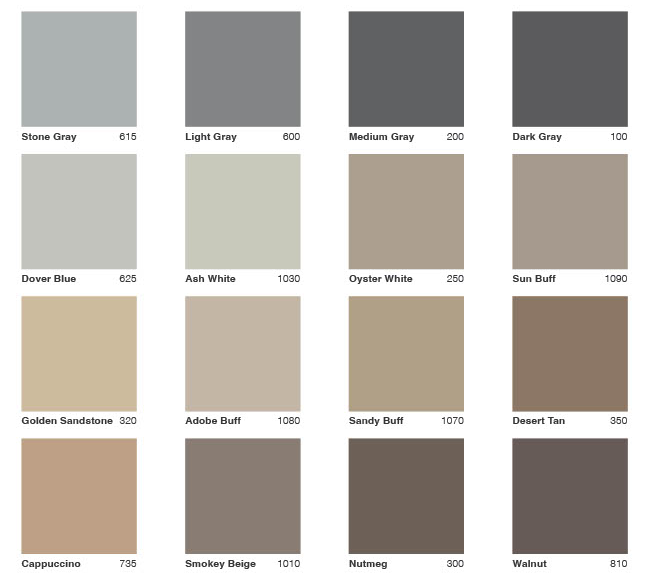What is Colored Concrete?
Nowadays coloured concrete is popular choice. Concrete can be colored in any color shade imagined. Colored concrete, also called decorative concrete, is grey concrete that can be stained or dyed in different colors. Coloured Concrete is a simple grey concrete which is pigmented at the surface or throughout the entire mix of the concrete.
How Many Colors Does Concrete Have?
The most popular concrete colors among homes are earth tones that look like wood or stone. But you can also use blue, orange, green, black, and other colors to color concrete. Also, many concrete builders can mix colors just the way you want them. For business projects, the color of the concrete can match branding, school colors, and other things.
Concrete Colors Chart
Below are some samples concrete color charts to explore what’s possible in concrete colors.

How to Do Colored Concrete?
Pigments that come from the ground or are made in chemical plants are used to color concrete. There are three different kinds of these pigments: powder, liquid, and small grains. Each of these different types of pigment has its own benefits and is used everywhere. The iron oxide particles in these colored pigments are 10 times smaller than the cement particles. When pigment is added to the wet cement mix, the smaller colored particles surround and cover the larger cement particles, making a colored tint. The ratio of color pigment to cement mixture depends on how much cement mixture is used.
For a darker, more vivid color, more pigment is needed when more cement mixture is used. If you want to color grey concrete, you need more pigment. If you want a light color, you can use white concrete, which is more expensive.
You can use either a water-based stain or an acid-chemical stain to change the color of your existing grey concrete. SDS offer colored concrete and other products as well as services for decorative flooring.
Why Should You Use Colored Concrete?
There are many reasons why Colored Concrete is popular nowadays. Most of the time, coloured concrete is used for style. It is a great choice for making interesting plans and creative concrete introductions. Colored concrete can be utilized to separate bigger spaces of concrete. If you have a substantial deck or long carport, shading all or portions of it can make it more fascinating than having it all dim.
There are many reasons why people today use colored concrete. Most of the time, colored concrete is used for its looks. It’s a great way to make interesting designs and artistic displays out of concrete. You can break up large areas of concrete with colored concrete. If you have a big concrete patio or a long driveway, you might want to color some or all of it instead of leaving it grey.People often use colored concrete to make things that look like nature, like green grass or gravel paths. By making concrete look like the landscape around it, you can hide it and lessen the industrial look that grey concrete has.
Benefits of Colored Concrete
- Concrete is very tough, strong, and durable.
- Concrete is hard to break with things like furniture legs, high heels, pets, etc.
- A concrete floor can last a long time if it is sealed well and properly maintain.
- Colored concrete makes the floor look like art.
How to Maintain Colored Concrete?
- Make sure your colored concrete cures properly so that it doesn’t crack on the surface.
- Over time, coloured concrete can lose its color. Not the color, but the grey in the concrete itself fades over time. Make sure a professional concrete company mixes your coloured concrete and uses a strong clear sealer to keep it from getting dirty.
- If you want the color concrete to last, keep it clean. This will also make your concrete less likely to have spots that are dark or have a different color.
Best Colored Concrete Service In Dubai
At SDS, we provide colored concrete services in Dubai. Based in Dubai, we are specialists with the right approach to all aspects of decorative flooring and high-end concrete flooring. Call SDS for Coloured concrete services in Dubai and choose a range of colors applied to concrete in various methods.
Application of Colored Concrete
- Community areas
- Driveways
- Floors
- Landscaping
- Outdoor entertainment areas
- Parks and gardens
- Paths and walkways
- Pool surrounds
- Precast
- Roadways and transport slab overlays
- Slabs
- Specialized applications
- Standard applications
- Walls



